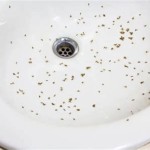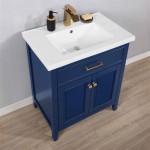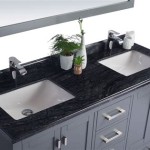How to Effectively Remove Moisture from Bathroom Walls
Bathrooms, with their constant exposure to water and humidity, are prone to moisture buildup. This can lead to a range of problems, including mold growth, structural damage, and unpleasant odors. Therefore, learning how to effectively remove moisture from bathroom walls is crucial for maintaining the integrity and hygiene of your bathroom space.
Below are some essential aspects to consider when addressing moisture issues in bathroom walls:
Identify the Source of Moisture
Determining the root cause of moisture buildup is essential for devising an effective solution. Common sources of bathroom wall moisture include:
- Leaking pipes or fixtures
- Poor ventilation
- Condensation
- Water damage (e.g., after a flood or leak)
Once the source of moisture is identified, appropriate measures can be taken to address it.
Address Water Leaks
Identifying and repairing any leaks promptly is crucial to prevent further moisture accumulation. Inspect pipes, fixtures, and seals for leaks. If any leaks are found, contact a qualified plumber to have them fixed professionally.
Improve Ventilation
Proper ventilation helps remove moisture from the air, reducing the likelihood of condensation and mold growth. Ensure your bathroom has adequate ventilation by installing an exhaust fan or opening windows during and after showers or baths. You can also use dehumidifiers to extract excess moisture from the air.
Control Condensation
Condensation occurs when warm, moist air comes into contact with cold surfaces. To minimize condensation, use bathroom exhaust fans and keep the bathroom temperature around 20-25°C. Wipe down surfaces after showering or bathing to remove any moisture.
Dry Walls Thoroughly
If bathroom walls have been exposed to water damage or excessive moisture, it's essential to dry them out thoroughly. Open windows or use fans to ventilate the room and circulate air. Use a moisture meter to check the moisture levels and ensure the walls are completely dry before painting or repairing them.
Prevent Future Moisture Buildup
To prevent moisture buildup from recurring, consider using mold-resistant paint or sealant on bathroom walls. These products help prevent the growth of mold and mildew, which thrive in moist environments.
Inspect Regularly
Regularly inspect your bathroom walls for signs of moisture, mold, or damage. Promptly address any issues that arise to maintain a healthy and hygienic bathroom environment.
Remember, professionals should handle severe water damage or persistent moisture problems. Always consult with a qualified contractor or moisture expert for proper assessment and repairs.

How To Stop Damp In Bathroom Expert Guide From Timberwise

Stop Bathroom Condensation Once And For All

How To Stop Condensation On Walls In Your Bathroom Igloo Surfaces

Bathroom Walls Showing Signs Of Moisture Doityourself Com Community Forums

Easy Ways To Prevent Water Stains On Bathroom Walls 7 Steps

Sticky Humidity On Bathroom Walls Hometalk

How To Get Water Stains Off Bathroom Walls Igloo Surfaces

Stop Bathroom Condensation Once And For All

Sticky Humidity On Bathroom Walls Hometalk

How To Deal With Bathroom Condensation Big







